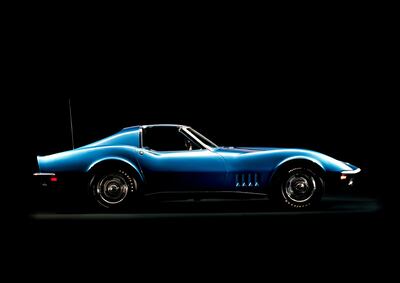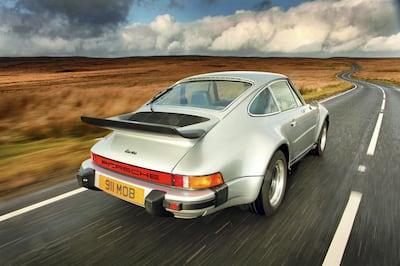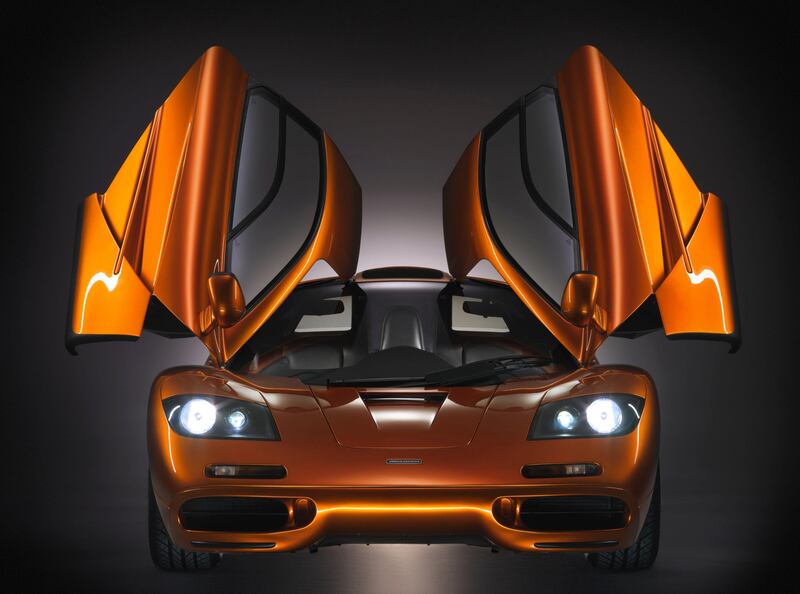Eventually every bubble bursts, no matter how long it's been around, or how beautiful it might appear. One day – and who knows when – like a Monty Python parrot, it will cease to be.
Over the past few years, we have seen various types of investment portfolios rise and fall. Not that long ago, the "dotcom bubble" burst, instantly turning multimillionaires into paupers. We've seen the prices of oil and gold increase and then decrease in dramatic fashion, and we've watched people get rich and then poor after amassing massive property collections.
One thing, however, that has proved to be a fairly steady path to consistent profit over the past couple of decades, is classic cars. Admittedly, even this segment of the market has had its fair share of ups and downs in the past, particularly in the late 1980s, when exotic cars were viewed as the ultimate symbols of success in a capitalist world gone mad, and prices rocketed.
What had previously been a market kept afloat by enthusiasts was wrecked by speculators who only cared about the bottom line. "I saw [Ferrari] Dinos that had been 'restored' using sections of Pepsi cans," says Nick Cartwright, a United Kingdom-based specialist in classic Ferraris. "One had its chassis tubes stuffed with old newspapers and was painted up to look nice, but, in reality, it was rotten to the core.
“Many of these cars were bought as wrecks by unscrupulous investors, made to look pretty, and sold for vast profits to people who should have known better. To put them right again, owners either spent staggering sums of money, or they just counted their losses and sold them for a fraction of what they’d bought them for.”
Those were crazy times and, in the early 1990s, the classic car market went through a much-needed "correction". It took another 20 years to get to the point where it's at now, but the market certainly seems different – values are experiencing a steadier rise, affected more by enthusiast collectors than those out to make a quick buck. Over the past couple of years, the market has continued to grow at a rate of between eight and 10 per cent, and the past decade has seen a swell of approximately 180 per cent in the values of some classic cars.
There are many different factors that affect any car's value, but, when it comes to "modern classics" built from the 1970s onwards, there is undoubtedly a nostalgic bent involved. Car enthusiasts who are now in their 40s and 50s, for instance, are often in positions of financial security – the kids have grown up and left home, the mortgage might have been paid off, and there may be a healthy disposable income to spend on that car you used to have on your bedroom wall.

Inevitably, some models that had, up until quite recently, only ever been viewed by the market as "used cars", have experienced spikes in interest and demand, with the best examples now fetching big money. We're seeing drastic upward shifts in the values of models such as Ferrari's 308 and 328 (a 150 per cent rise over the past six years alone) and Porsche's early 911 Turbo (another 150 per cent). Even hot hatches such as Peugeot's genre-defining 205 GTI and the early Golf GTIs are making previously unimaginable sums at auction. Never underestimate the power of being able to relive your youth.
So if you’re in the UAE and fancy a dabble, what’s the best first step? How do you spend smart when it comes to buying a vehicle that might be more than half a century old?
Generally, the rarer the car, the more it will be worth, especially if it’s an early example of a model that could be considered a game changer. Values of original Range Rovers and Audi Quattros are going through the roof as the motoring world comes to recognise their importance to the landscape. Significant anniversaries also affect values – evidenced when Jaguar’s maligned XJ220 turned 20 years old in 2012. Only 275 were ever made and, within months of the motoring media turning a spotlight on this Jag’s history, values had increased by some 50 per cent – and they’ve kept on climbing over the past five years.
Originality is also key. One of 64 road-going McLaren F1s has just surfaced in Japan, completely unused, with its interior still wrapped in protective paper, squirrelled away for 20 years after its patient owner paid approximately Dh3.5 million for it. Industry experts are speculating that, when it sells, it will go for more than Dh95 million. "Without a doubt, this is one of the most important road cars ever to be offered for sale," says Tom Hartley Jr in London, who is selling it on behalf of the anonymous Japanese businessman, "and if preserved, is highly likely to be the most valuable road car in the world in years to come."
You needn’t spend vast sums, though, to make a decent return on a car. For sale in Dubai at the time of writing is a 1992 Porsche 928 GTS – the most desirable variant of a model that has seen a significant resurgence over the past couple of years. It’s covered 115,000km from new, and the asking price is Dh80,000. To buy an equivalent example in Europe you’d need to spend nearly Dh260,000.
Air-cooled Porsche 911s are almost always a safe investment – and the rarer they are, the better. Currently there is a 1994 964-generation Turbo available in Dubai that’s showing 54,000km, for Dh920,000. Elsewhere, that car would be going for about Dh1.1 million, and values will only increase over time. There’s a Lamborghini Diablo VT Roadster advertised for Dh799,000, while in Germany, an identical car is listed at Dh1.2 million – the disparities between countries are often even greater.

The laws of supply and demand apply here as much as anywhere else in the world, so in a country where there are more used Ferraris on sale than Volvos, prices will naturally be more keen than they are in regions where these supercars are in shorter supply. The same can be said in reverse: buy a car in Europe or in the United States, where there's no shortage of models like old Triumphs and Austin Healeys, then ship it over here, where they're often worth much more due to their scarcity.
Assyl Yacine, head of Dubai’s leading classic car dealership Tomini Classics, has seen the market here shifting over the past few years, with increasing appreciation for older, collectible models. “People are starting to wake up to the appeal of European classics,” he says. “American and Japanese classics have always been in demand here, understandably, as those were the brands available in the early days of this country. But now, as more and more expats are turning to classic cars as investments rather than property, art and the like, prices for certain models are falling into line with other countries.”
It’s a market like any other– you need to be shrewd, fully clued-up and ready to spend when something worth buying appears for sale. The classic car bubble could burst at any moment, obviously, but there’s no sign of it doing so anytime soon. In the meantime, especially now that the temperate winter months are upon us, perhaps it’s time to take the plunge and put some money into something you’ll actually enjoy while knowing that, when the time comes to sell it, you’ll make a tidy return. How many other investments can you confidently say that about?






